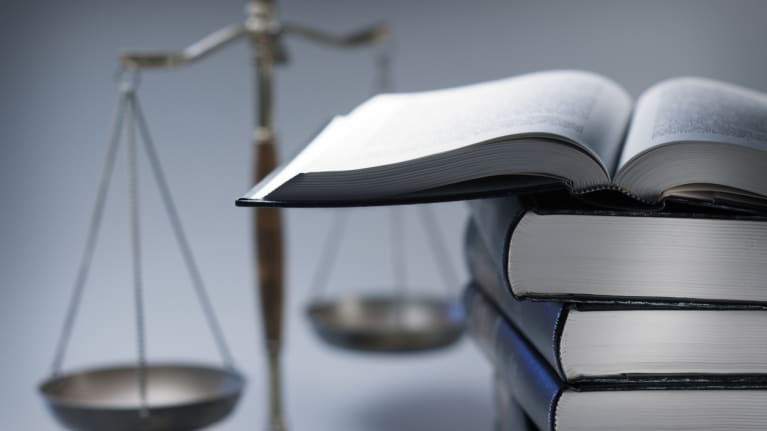Criminal and civil procedure in the USA
The sources of criminal and civil procedural law in relation to the federal court system and to the independent judicial systems of each of the states are the relevant acts of legislation, rules issued by the judiciary, and common law.
A special role in regulating the issues of the criminal process belongs to the US Constitution. In its text, in amendments IV, V, VI, VII, which were included in the Bill of Rights (1791), and in the XIV amendment, not only many essential provisions on the judiciary are formulated, including the delineation of the jurisdiction of the courts of the federation and the states , but also the most important norms that determine the rights of the accused at various stages of the criminal process.
Many provisions of federal criminal procedure law, including those related to arrest and search, litigation, appeals of convictions, etc., are collected in Part II (“Criminal Procedure”) of Title 18, United States Code (Part 1 of this section is the federal criminal code). One of the sources of federal criminal and especially civil procedural law is also section 28 (“Judicial system and judicial procedure”) of the US Code (as amended in 1948 with subsequent amendments and additions).

A significant role in regulating civil and criminal proceedings is played by regulations issued by the US Supreme Court on the basis of the powers granted to it in a number of acts of Congress in the 1930s to prescribe rules of procedure for civil and criminal cases to federal courts.
The most important among these decisions of the Supreme Court are the following federal rules: civil procedure (1938), criminal procedure (1946), appeal proceedings (1968) and on evidence (1975).
Separately, the Supreme Court also issued the rules of proceedings in this court itself (1980), the rules for the trial by federal magistrates of cases of petty crimes (1971), etc.
Such acts, as well as amendments to them, come into force if after their approval by the US Supreme Court will not be followed by objections from both houses of Congress during its next session. They are published in the United States Code as appendices to the relevant sections.
State constitutions
At the state level, the norms of the state constitutions and sections of the codes of laws devoted to relevant issues, which differ greatly in form and content, act as sources of criminal procedural law. In a number of states (California, etc.) they are combined with criminal codes in one normative act.
Unlike the reform of criminal codes based on the Model Criminal Code of 1962, state criminal procedure codes have not undergone such a thorough revision and convergence, despite the existence of a common model in the form of the Model Code of Criminal Procedure and the Model Code of Evidence, developed even earlier, in 1930 and 1942, by the same Institute of American Law.
In the civil procedure codes of the states, there is much greater similarity, since legislators in different states often relied on a single model – the Code of Civil Procedure of the State of New York in 1848, compiled by the famous lawyer D. Field.
The sources of procedural law in the states are also the rules developed by the supreme judicial bodies of each of the states independently, but, as a rule, with a focus on the relevant acts of the US Supreme Court – the role of the federal rules of civil procedure, which are accepted in many states in practice, is especially great here. without changes.

Of fundamental importance for all American courts (both federal and state) are the decisions of the US Supreme Court, which formulate rulings on procedural issues, primarily some decisions made in the 1960s.
The Gideong (1963) and Escobedo (1964) judgments establish the right of any person to have legal counsel when questioned by the police; the Mapp decision (1961) prohibits the use in a trial of evidence obtained illegally, especially as it was formulated in the Miranda decision (1966), if it is a question of evidence obtained in this way recognized by the accused.
US court system
In the United States, there is a unified federal system of courts and independent judicial systems in each of the 50 states, the District of Columbia, and four federal territories.
The competence of the federal courts includes primarily the consideration of criminal cases for crimes provided for by federal law, and civil cases in claims against the federal authorities and in disputes arising in connection with the application of federal laws or between citizens living in two different countries, if the amount the claim exceeds $10,000.
On a number of issues, the competence of federal and state courts coincides both in criminal and civil cases, which has given rise to very complex rules for delimiting their functions. In certain situations, prosecutors and civil plaintiffs are given the choice between going to a state court or a federal court, and in some very rare cases, it is possible to go to federal court with a complaint in a case heard in state court, but only if we are talking about the interpretation or application of federal law, if there is a “federal issue”. The overwhelming majority of criminal and civil cases are considered by the state courts, and only a relatively small part of them (5-10%) is the subject of federal court proceedings.
